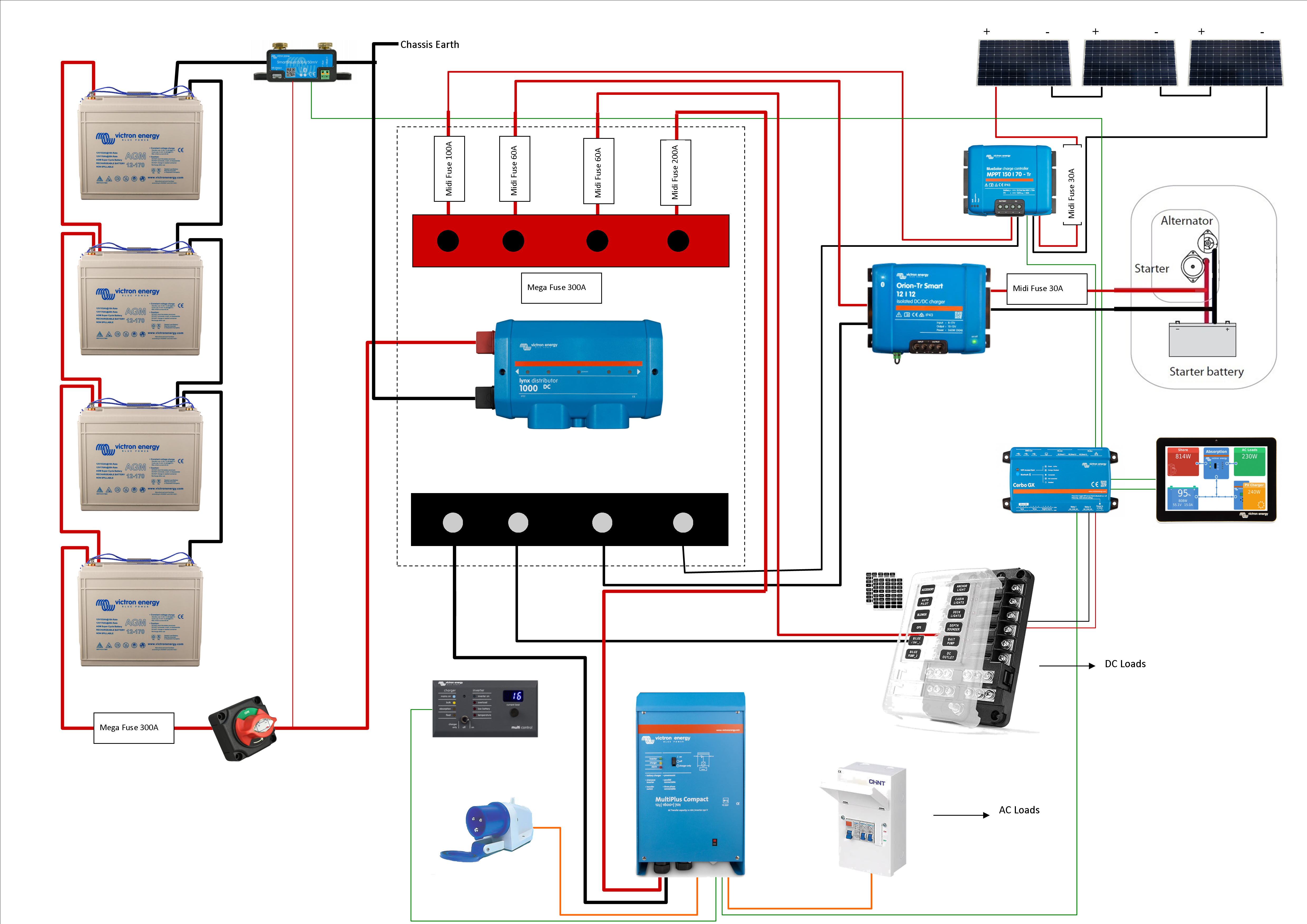
I've bought most of the stuff in this setup and now want to get fuses/breakers. But wanted to run it past those in the know before buying. Any comments on the above diagram would be welcome too; sizing of the wiring to follow when i've measured. Also does anyone have any recommendations on breakers/fuses?
